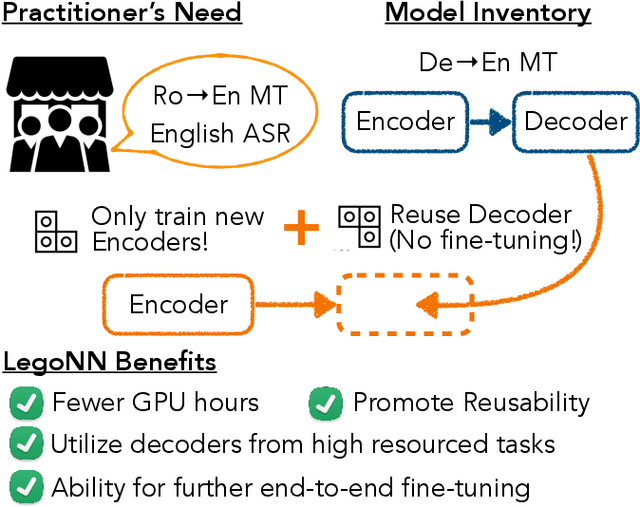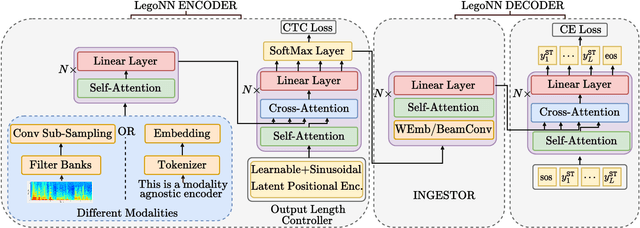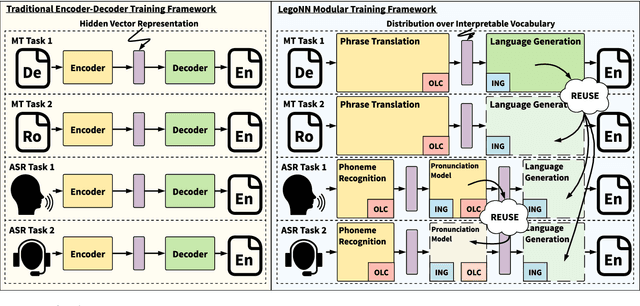LegoNN: Building Modular Encoder-Decoder Models
Paper and Code
Jun 07, 2022



State-of-the-art encoder-decoder models (e.g. for machine translation (MT) or speech recognition (ASR)) are constructed and trained end-to-end as an atomic unit. No component of the model can be (re-)used without the others. We describe LegoNN, a procedure for building encoder-decoder architectures with decoder modules that can be reused across various MT and ASR tasks, without the need for any fine-tuning. To achieve reusability, the interface between each encoder and decoder modules is grounded to a sequence of marginal distributions over a discrete vocabulary pre-defined by the model designer. We present two approaches for ingesting these marginals; one is differentiable, allowing the flow of gradients across the entire network, and the other is gradient-isolating. To enable portability of decoder modules between MT tasks for different source languages and across other tasks like ASR, we introduce a modality agnostic encoder which consists of a length control mechanism to dynamically adapt encoders' output lengths in order to match the expected input length range of pre-trained decoders. We present several experiments to demonstrate the effectiveness of LegoNN models: a trained language generation LegoNN decoder module from German-English (De-En) MT task can be reused with no fine-tuning for the Europarl English ASR and the Romanian-English (Ro-En) MT tasks to match or beat respective baseline models. When fine-tuned towards the target task for few thousand updates, our LegoNN models improved the Ro-En MT task by 1.5 BLEU points, and achieved 12.5% relative WER reduction for the Europarl ASR task. Furthermore, to show its extensibility, we compose a LegoNN ASR model from three modules -- each has been learned within different end-to-end trained models on three different datasets -- boosting the WER reduction to 19.5%.
 Add to Chrome
Add to Chrome Add to Firefox
Add to Firefox Add to Edge
Add to Edge